At last I'm down to the rub rails and coming. Happily, I had just enough 5/4 mahogany to get out the rails. The rub rail is 5/8" x 1" in section with a 1/2" radius top and bottom, basically a 1" bullnose. I tapered the rails slightly fore and aft as suggested in several of the boat building books I've read. The rails required some hand fitting, especially at the bow. I secured them with epoxy and 1 1/2" bronze screws. Lastly, the holes were bunged and flushed. The following photo shows some yet to be flushed bungs.
When it came time to fabricate the coming I had to make a choice regarding material. I was unable to source genuine mahogany in the length I needed (10 feet). I originally thought white oak would work well, but it's heavy and, more importantly, very difficult to cold bend, even when re-sawn to 1/4". I opted for African mahogany instead as it is much lighter in weight and bends easily. Fortunately, I was able to obtain a couple well matched boards locally. The coming consists of an inner and outer piece, each 1/4" thick. I applied the inner pieces first, then laminated the outer pieces in place.
With the coming in place it was time to finish sand and apply varnish. I sanded everything to 180 grit before applying the first coat of varnish, thinned 50%. The next coats are thinned about 20%. The Epifanes instructions call for 10%, but I find 20% works better for me. The stuff is incredibly thick un-thinned. The following photos were taken after three coats.
I'm finishing the hatch, also of African mahogany, separately.
A drip lip at the front and rear of the cockpit will divert accumulated spay or rain through small limbers in the coming.
The coming angles outward about 8 degrees in an attempt to provide a somewhat comfortable backrest when seated on the floor.
I plan on eight coats of varnish before flipping the boat and painting the bottom. To say I'm anxious to get her in the water is an extreme understatement.
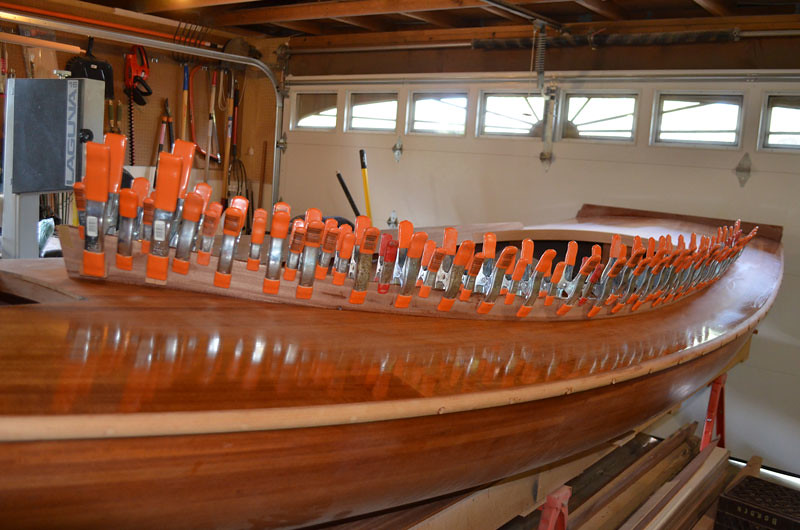

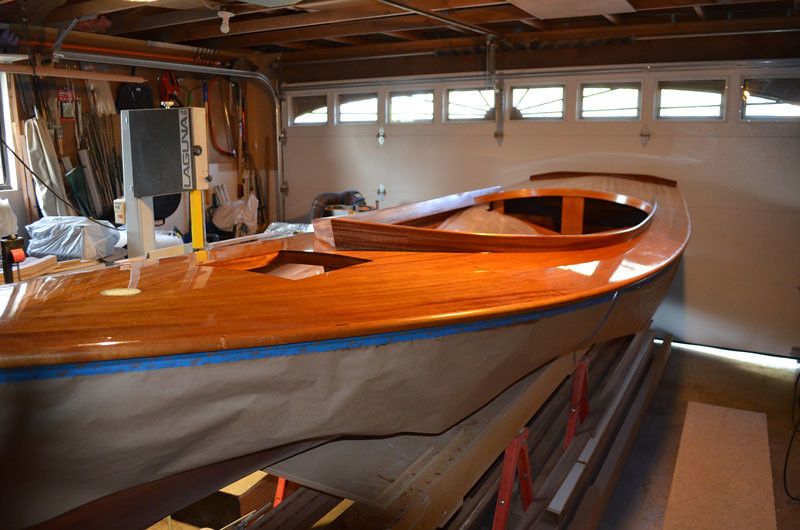
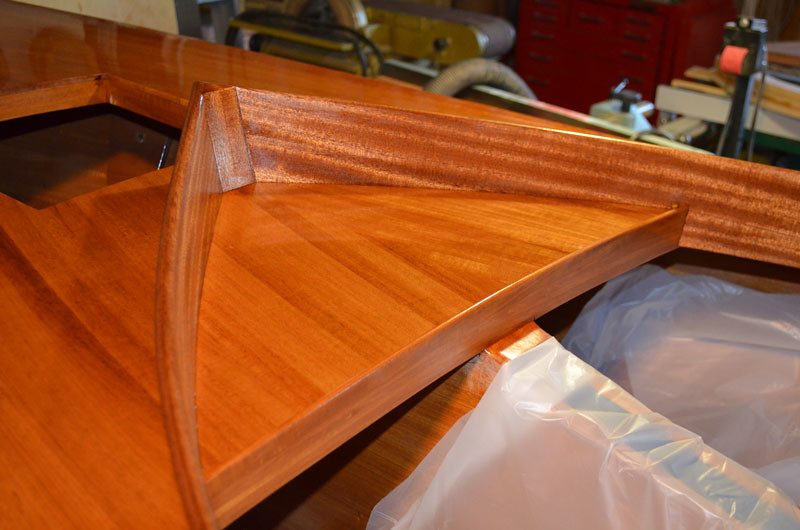

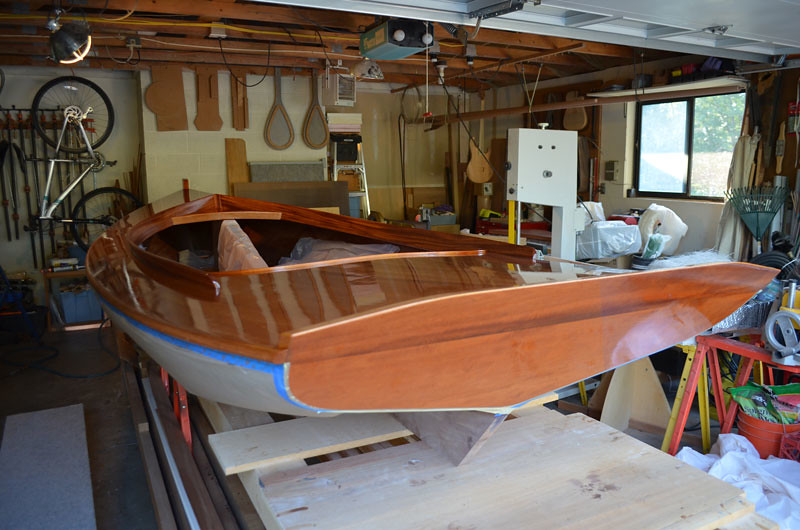
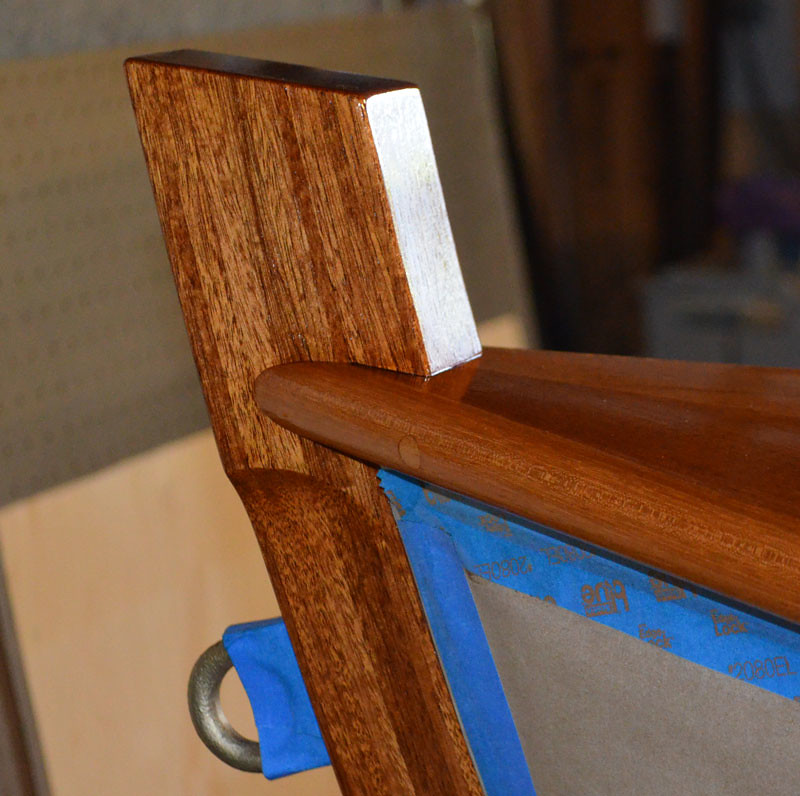
No comments:
Post a Comment